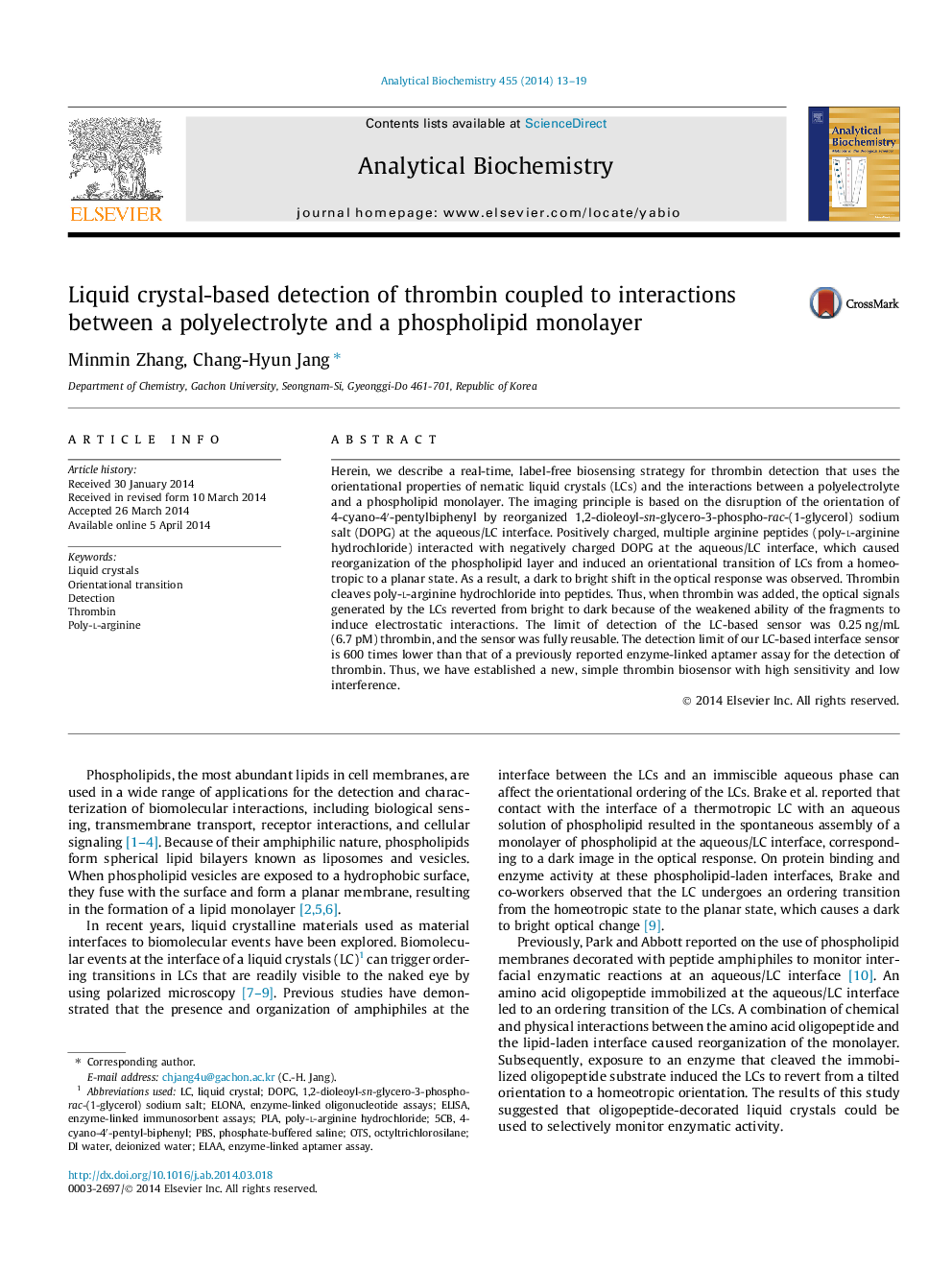| کد مقاله | کد نشریه | سال انتشار | مقاله انگلیسی | نسخه تمام متن |
|---|---|---|---|---|
| 7559281 | 1491392 | 2014 | 7 صفحه PDF | دانلود رایگان |
عنوان انگلیسی مقاله ISI
Liquid crystal-based detection of thrombin coupled to interactions between a polyelectrolyte and a phospholipid monolayer
ترجمه فارسی عنوان
شناسایی کریستال مایع از ترومبین همراه با تعامل بین پلی الکترولیت و یک پلی کربنات فسفولیپید
دانلود مقاله + سفارش ترجمه
دانلود مقاله ISI انگلیسی
رایگان برای ایرانیان
کلمات کلیدی
کریستال مایع، انتقال جغرافیایی، تشخیص ترومبین پلی-ال-آرژینین،
موضوعات مرتبط
مهندسی و علوم پایه
شیمی
شیمی آنالیزی یا شیمی تجزیه
چکیده انگلیسی
Herein, we describe a real-time, label-free biosensing strategy for thrombin detection that uses the orientational properties of nematic liquid crystals (LCs) and the interactions between a polyelectrolyte and a phospholipid monolayer. The imaging principle is based on the disruption of the orientation of 4-cyano-4â²-pentylbiphenyl by reorganized 1,2-dioleoyl-sn-glycero-3-phospho-rac-(1-glycerol) sodium salt (DOPG) at the aqueous/LC interface. Positively charged, multiple arginine peptides (poly-l-arginine hydrochloride) interacted with negatively charged DOPG at the aqueous/LC interface, which caused reorganization of the phospholipid layer and induced an orientational transition of LCs from a homeotropic to a planar state. As a result, a dark to bright shift in the optical response was observed. Thrombin cleaves poly-l-arginine hydrochloride into peptides. Thus, when thrombin was added, the optical signals generated by the LCs reverted from bright to dark because of the weakened ability of the fragments to induce electrostatic interactions. The limit of detection of the LC-based sensor was 0.25Â ng/mL (6.7Â pM) thrombin, and the sensor was fully reusable. The detection limit of our LC-based interface sensor is 600 times lower than that of a previously reported enzyme-linked aptamer assay for the detection of thrombin. Thus, we have established a new, simple thrombin biosensor with high sensitivity and low interference.
ناشر
Database: Elsevier - ScienceDirect (ساینس دایرکت)
Journal: Analytical Biochemistry - Volume 455, 15 June 2014, Pages 13-19
Journal: Analytical Biochemistry - Volume 455, 15 June 2014, Pages 13-19
نویسندگان
Minmin Zhang, Chang-Hyun Jang,
